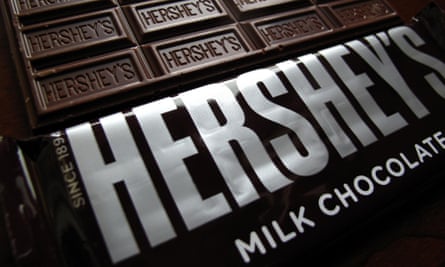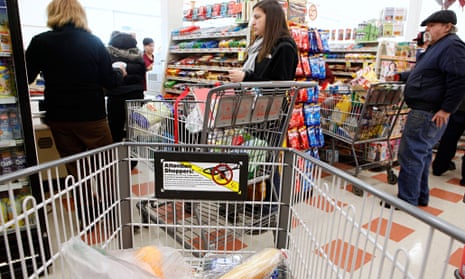Online shopping, kerbside pickup and self-checkout aisles have made it quicker and easier than ever for Americans to buy the things they need. That’s a huge problem for the candy and chocolate industries, which have made billions over the years off waits at the register – and customers’ last-minute impulse buys.
Those lost “instant consumable” sales, combined with “a more competitive snacking environment”, helped slow Hershey Co sales last year below expectations, the sweets company said last week.
So to get Americans splurging again, the country’s biggest chocolate maker is investing heavily on technology that would spread its temptations far beyond the traditional checkout lines, trying to re-inspire a sweet tooth that might expand the company’s bottom line. “Impulse, in an indulgent business, is really important … But shopping is changing, and impulse is under threat,” said Frank Jimenez, Hershey’s senior director of retail evolution. “What happens if and when the checkout goes away?”
Shoppers moving too quickly to crave has become a worrying trend for the five “power” sectors of the supermarket checkout: sweets, snacks, drinks, magazines and health-related flotsam, such as lip balm. Though tiny, the grab-and-go items are incredibly lucrative: checkout areas account for 1% of a typical supermarket’s merchandising space but 4% of its profit, Jimenez said.
Yet few companies are leading the charge to win back the impulse buys like Hershey, whose Reese’s, Kit Kat, York, Almond Joy and namesake bar account for the biggest chunk of America’s $17.7bn chocolate market.
At an executive meeting last month, Hershey senior manager of front-end experience Chris Witham outlined some of the ways the company planned to win back “unplanned purchases”, with tests starting this year.
For kerbside grocery pickups, Hershey could upgrade kiosks or add menu boards to allow buyers one final candy grab before finishing their order. At self-checkout machines, shoppers could find a special dispenser that spits out chocolate bars on demand. The company could also dispatch an army of vending machines in order to grab the attention of shoppers outside the store, including, potentially, looking to “some dispensing opportunities around [petrol] pumps”, Witham said.

Hershey has sponsored research into what makes the world’s shoppers reach for chocolatey gratification, and Jimenez says the company created what it calls the “Eight Human Truths of Impulse” to explain why people succumb to little checkout-aisle urges. The goodies can delight, indulge, recharge or “rescue”; they can spoil (“I worked hard today”) or charm (“That’s a great idea”); they can lead shoppers to aspire (as with food or fitness magazines); or they can simply convince buyers they’ve scored on a good deal.
With chocolate, “people come to the category as a ‘reward me’ category. They know it’s indulgent. It’s not a food group,” Hershey chief executive John Bilbrey said on a call with analysts last summer.
The key metric for sellers at mass retailers’ “front end” has always been “dwell time”: the longer shoppers wait at the “pay point” surrounded by a colourful hoard of snacks and sweets, the greater the chance they’ll grab one of those little treats to buy.
But that pause is getting shorter as technology erases checkout aisles’ lucrative inefficiencies. Supermarkets are rapidly expanding in-store pickup of online orders and even curbside grocery pickup, both of which skip the gossip mags, candy and gum. Kroger, America’s largest supermarket chain, has even tested high-speed, bar-code-scanning “checkout tunnels” that would allow shoppers to escape largely unindulged.
Perhaps the most egregious curtailer of the impulse buy has been self-checkout aisles, which supermarkets first turned to for lower labour costs and now account for about 40% of all mass-retailer sales.
Late last year, Hershey began running an experiment at a Winn-Dixie in Baton Rouge, Louisiana, replacing the old candy aisle with a bright, sugar-filled “store within a store” of grab-and-go sweets, placed right next to the checkout aisles.
“A majority of shoppers find the candy category the hardest to shop and the least inspiring in the store, resulting in many shoppers walking away without any confection in their basket,” said Rick Price, Hershey’s senior manager of centre store evolution. The “re-imagined candy aisle,” he said, “makes candy shopping more convenient and memorable.”
There are distractions Hershey might be powerless to dispel, including the industry-wide annoyance of shoppers staring at their mobile phones rather than the checkout stands. But the industry thinks its biggest fight is simply over visibility. Confectionery companies say all they need to do is put the sweets within arm’s reach. Amenable shoppers will do the rest.
This article appeared in Guardian Weekly, which incorporates material from the Washington Post

Comments (…)
Sign in or create your Guardian account to join the discussion